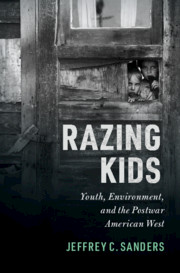1 - “They Build Strong Children with Well Bodies”
Building Child-Centered Landscapes
Published online by Cambridge University Press: 10 December 2020
Summary
This chapter focuses on the efforts of corporate leaders, welfare professionals, and working families in West Coast defense cities during World War II who struggled to accommodate children and build communities in two significant West Coast shipbuilding cities: Richmond, California, and Vanport, Oregon. The war offered a combination of public and private resources and support for policy makers, professionals, and industrialists alike to test designs for future environments that served workers and families and that they hoped would mitigate the looming threat of juvenile delinquency. This chapter argues that the postwar obsession with young people’s health and environments found early and important expression in these new material conditions. In Richmond – but especially in Vanport – corporate and federal cooperation reshaped ideals and material forms of housing, employment, and child welfare in one subsidized package that would long endure. For diverse families who migrated for work, the defense worker communities were often their first encounter with a new urban industrial life, heightening their expectations for the future for their children, even if many would eventually be systematically excluded from it.
- Type
- Chapter
- Information
- Razing KidsYouth, Environment, and the Postwar American West, pp. 21 - 61Publisher: Cambridge University PressPrint publication year: 2020



